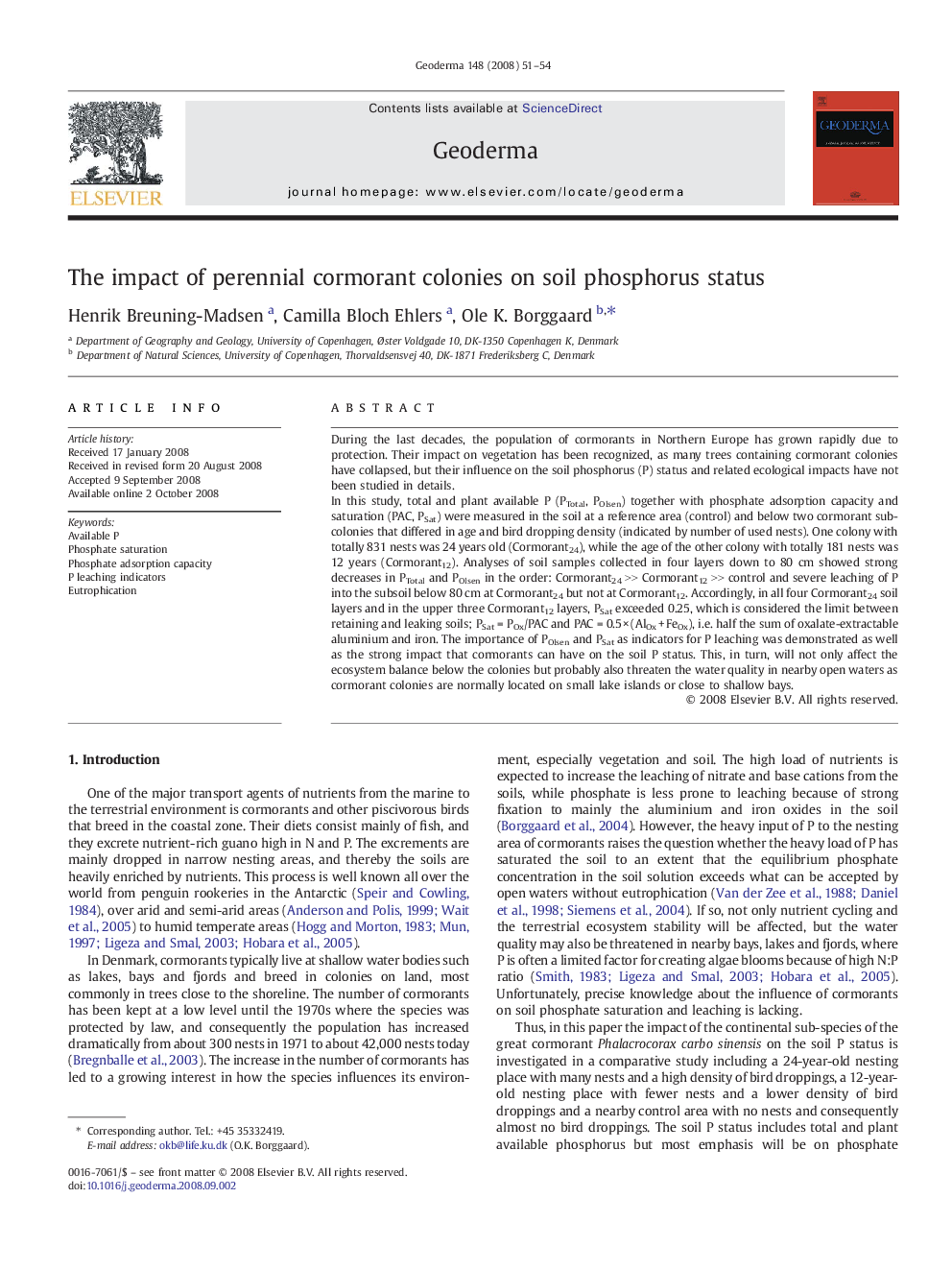| Article ID | Journal | Published Year | Pages | File Type |
|---|---|---|---|---|
| 4574781 | Geoderma | 2008 | 4 Pages |
During the last decades, the population of cormorants in Northern Europe has grown rapidly due to protection. Their impact on vegetation has been recognized, as many trees containing cormorant colonies have collapsed, but their influence on the soil phosphorus (P) status and related ecological impacts have not been studied in details.In this study, total and plant available P (PTotal, POlsen) together with phosphate adsorption capacity and saturation (PAC, PSat) were measured in the soil at a reference area (control) and below two cormorant sub-colonies that differed in age and bird dropping density (indicated by number of used nests). One colony with totally 831 nests was 24 years old (Cormorant24), while the age of the other colony with totally 181 nests was 12 years (Cormorant12). Analyses of soil samples collected in four layers down to 80 cm showed strong decreases in PTotal and POlsen in the order: Cormorant24 >> Cormorant12 >> control and severe leaching of P into the subsoil below 80 cm at Cormorant24 but not at Cormorant12. Accordingly, in all four Cormorant24 soil layers and in the upper three Cormorant12 layers, PSat exceeded 0.25, which is considered the limit between retaining and leaking soils; PSat = POx/PAC and PAC = 0.5 × (AlOx + FeOx), i.e. half the sum of oxalate-extractable aluminium and iron. The importance of POlsen and PSat as indicators for P leaching was demonstrated as well as the strong impact that cormorants can have on the soil P status. This, in turn, will not only affect the ecosystem balance below the colonies but probably also threaten the water quality in nearby open waters as cormorant colonies are normally located on small lake islands or close to shallow bays.
